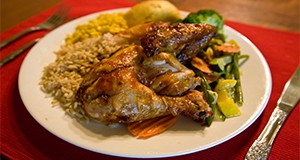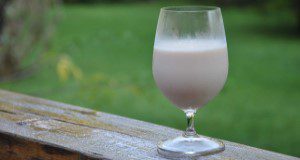La leche de soja es una leche vegetal elaborada a partir de semillas de soja (Glicine max). A diferencia de algunas de las leches de origen vegetal que se comercializan recientemente, la leche de soja tiene una larga historia como bebida en todo el mundo y se comercializa en los Estados Unidos durante más de un siglo. Si se ha preguntado cómo se compara con la leche de vaca, esta publicación describe los ingredientes y el contenido de nutrientes de la leche de soja producida comercialmente y sus posibles beneficios y riesgos para la salud.
This new 6-page publication of the UF/IFAS Food Science and Human Nutrition Department is the Spanish translation of FSHN20-54/FS422, Plant-Based Milks: Soy, written by Jessica Goldberg, Daniela Rivero-Mendoza, and Wendy J. Dahl.
https://edis.ifas.ufl.edu/fs430
Tag: proteína
Datos sobre la proteina
 Our bodies are made of many proteins. They can make 11 of the amino acids that are needed to make protein but cannot make the other nine, so we must get them from our diet. This 3-page fact sheet is the Spanish version of Facts about Protein (FSHN15-01/FS261). It provides an overview of protein basics, roles of proteins in the body, recommended intake, sources of protein, and healthier protein choices. Written by Nicole C. Agro and Wendy J. Dahl, and published by the UF Department of Food Science and Human Nutrition.
Our bodies are made of many proteins. They can make 11 of the amino acids that are needed to make protein but cannot make the other nine, so we must get them from our diet. This 3-page fact sheet is the Spanish version of Facts about Protein (FSHN15-01/FS261). It provides an overview of protein basics, roles of proteins in the body, recommended intake, sources of protein, and healthier protein choices. Written by Nicole C. Agro and Wendy J. Dahl, and published by the UF Department of Food Science and Human Nutrition.
http://edis.ifas.ufl.edu/fs272
